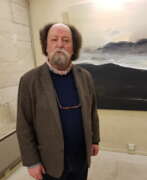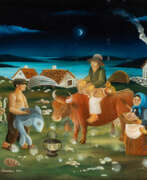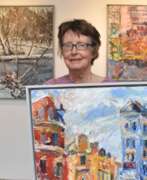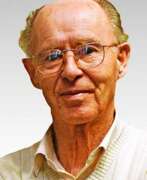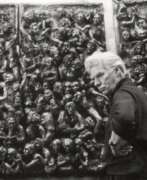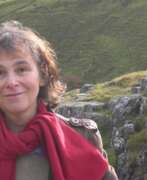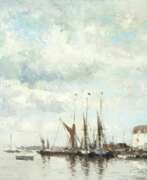Rural landscape Contemporary art


Berenice Alice Abbott was an American photographer best known for her portraits of between-the-wars 20th century cultural figures, New York City photographs of architecture and urban design of the 1930s, and science interpretation in the 1940s to 1960s.
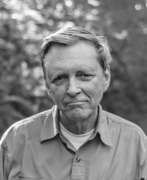

Robert Adams is an acclaimed American photographer known for his profound exploration of the American West's changing landscapes. His work, which gained prominence in the mid-1970s, delves into the tension between the natural beauty of the land and the marks of human encroachment. Adams's photography is a reflection on humanity's relationship with the environment, offering both a critique and a celebration of the landscape.
Robert Adams's notable series, such as "Turning Back" and "The New West," showcase his unique perspective on environmental and urban development issues. His work extends beyond just capturing images; it is a thoughtful commentary on the balance between nature and industrialization. His photographs, often devoid of people, focus on the land itself, telling a story of alteration and resilience.
Exhibitions of Adams's work, such as "American Silence: The Photographs of Robert Adams" at the National Gallery of Art, provide insight into his 50-year career and his ability to capture the silent yet profound narratives of the American landscape. His pieces are part of major collections and have been featured in numerous retrospectives, underlining his influence and significance in the world of photography.
For art collectors and enthusiasts, Robert Adams's work offers a poignant perspective on the American West, blending aesthetic beauty with critical environmental commentary. Engaging with his work invites reflection on our interaction with the landscape and our role in shaping the environment.
If you're interested in staying updated on Robert Adams's work and exhibitions, consider subscribing to newsletters from galleries and museums that feature his art. This way, you'll be informed about new displays of his work and opportunities to engage with his insightful perspectives on the American West.


Gerhard Ausborn was a German painter. He studied painting at the Hamburg University of Fine Arts.
Landscapes, ancient sites and modern cities characterise the subject of Gerhard Ausborn's paintings. In parallel, he creates abstract compositions without objects.
The paintings are inspired by impressions the artist gathered during his numerous journeys to many countries around the world. The paintings were not created on location, but always afterwards in his Hamburg studio. They are not intended to be an exact copy of reality, but rather, in memory, what is seen is reduced to the essentials and combined with the artist's own ideas, sensations and experiences.


Lewis "Duke" Baltz was an American visual artist, photographer, and educator. He was an important figure in the New Topographics movement of the late 1970s. His best known work was monochrome photography of suburban landscapes and industrial parks which highlighted his commentary of void within the "American Dream". His work is focused on searching for beauty in desolation and destruction. Baltz's images describe the architecture of the human landscape: offices, factories and parking lots. His pictures are the reflection of control, power, and influenced by and over human beings. His books and exhibitions, his "topographic work", such as The New Industrial Parks, Nevada, San Quentin Point, Candlestick Point, expose the crisis of technology and define both objectivity and the role of the artist in photographs. He wrote for many journals, and contributed regularly to L'Architecture d'Aujourd'hui. Baltz's work is held in the collections of the Solomon R. Guggenheim Museum, Metropolitan Museum of Art, Tate Modern, Los Angeles County Museum of Art, Whitney Museum of American Art etc.


Otmar Blaser is a contemporary German artist. In 1967 he studied at the Werkkunstschule with Prof. Holweck. In 1968 he traveled through Europe, the Middle East, Canada and America. From 1970-1976 he studied at the University of the Arts in Berlin. In 1975 he was a master's student with Professor Bachmann, in 1976 he was an assistant to Professor Kapitsky at the Institute of Visual Communication and Design. In 1977 he was a lecturer at the Volkshochschule Berlin-Neukölln, collaborating freelance with the Theatertreffen Berlin.


Francois Boisrond is a contemporary French painter. He studied from 1977 to 1980 at the National School of decorative Arts. In 1981 he became involved in the Free Figuration movement. Inspired by visual products (advertising products, posters, stickers, video games etc.), cartoon characters, and by using acrylic paint, Francois Boisrond’s works are colourful, figurative and enigmatic, and his simplified shapes are often outlined in black. He portrays mainly characters, frequently symbolic in everyday situations, but he also depicts urban, maritime or rural landscapes. Besides this Boisrond creates humanitarian and publicity posters. Since the 1990’s the artist has become interested in an imaginary public and the everyday life that invades each and every one of us.


Yves Brayer was a French painter and lithographer known for his landscapes, portraits and still lifes.
Brayer studied at the École Nationale Supérieure des Beaux-Arts in Paris and then in Rome. He was influenced by classical art and inspired by Mediterranean landscapes, which he often depicted in his paintings. He was also interested in the culture of ancient Greece, which influenced his work.
Brye's early work was inspired by the Cubist and Surrealist movements. He was a founding member of the Paris School, a group of artists working in the French capital in the mid-twentieth century. He was also a member of the French Academy of Fine Arts and a Knight of the Legion of Honour.
Bryeux's work has been exhibited in prestigious galleries and museums around the world, including the Louvre in Paris, the Museum of Modern Art in New York and the National Museum of Western Art in Tokyo. His paintings are in many private collections.
Over the course of his career, Brye has received numerous awards and honours, including the Grand Prix de Rome and the Prix de l'Institut de France. He is considered one of the most important French artists of the 20th century.


Lionel Victor Bulmer was an English impressionist painter, a member of the New English Art Club, founded in 1886 as an exhibition society dedicated to promoting the avant-garde technique of French impressionist painting, the influence of which was clearly evident in Bulmer's own work.


Gary Bunt is a British self-taught artist known for his paintings of the English suburbs and countryside. He took up art to overcome a serious illness. Gary Bunt in a primitive style, with sophisticated simplicity and good humor depicts ordinary life with its simple joys.


Stefano Calisti is an Italian artist. His paintings, characterised by an unusually lively colour palette, have been widely acclaimed by audiences and critics alike. His favourite subjects include landscape, evoking associations with colour, matter and light.
Calisti's work is characterised by his attention to colour and texture, often creating a sense of movement and dynamism in his works. Behind an intense bordering on surrealist colour, a conceptual element emerges in which naturalness and artificiality are juxtaposed.
Throughout his career, Calisti has exhibited widely in Italy and abroad, including solo shows. He has also participated in group exhibitions at the Venice Biennale and the Museum of Modern Art in Rome.
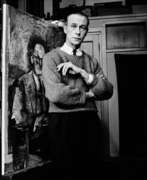

Sir William Menzies Coldstream (CBE) was an English realist painter and teacher. His type of realism was based on careful measurement by the following method: standing in front of the subject being depicted and holding the brush vertically at arm's length. Coldstream painted still lifes, landscapes, portraits, and nudes of women.


Ray Austin Crooke was an Australian artist known for for serene views of Islander people and ocean landscapes, many of which are based on the art of Paul Gauguin. He won the Archibald Prize in 1969 with a portrait of George Johnston. His painting The Offering (1971) is in the Vatican Museum collection. Many of his works are in Australian galleries. He was made a Member of the Order of Australia in the 1993 Australia Day Honours, "in recognition of service to the arts, particularly as a landscape artist".


Josef Dobrowsky was an Austrian painter and member of the Zinkerbacher Artist Colony that lived and worked together at Lake Wolfgang until its dissolution after Austria was annexed by Germany, known as the Anschluss, in 1938.


Alfred Fritzsching is a German artist known as Painter, graphic artist, draftsman, sculptor, commercial, commercial graphic artist. He began his training as a commercial graphic artist at the Blocherer School for Graphic and Advertising in Munich and worked as an advertising specialist. In 1970 Alfred Fritzsching became a member of Munich Artists 'cooperative and participated in exhibitions at the Haus der Kunst in Munich. From 1978, he worked as a freelance painter and also as board member and juror of the Munich Artists' Cooperative.


Klaus Fußmann is a contemporary German painter. He studied from 1957 to 1961 at the Folkwang University of the Arts in Essen and from 1962 to 1966 at the Berlin University of the Arts. From 1974 to 2005, he was a professor at the Berlin University of the Arts. His work has won several awards, such as the Villa Romana prize in 1972 and the Art Award of Darmstadt in 1979. Major presentations of his work include exhibitions at the Neue Nationalgalerie in Berlin, 1972; the Mathildenhöhe in Darmstadt, 1982; the Kunsthalle Emden, 1988; the Kunsthalle Bremen, 1992; and the Museum Ostwall in Dortmund, 2003. In 2005 Fußmann completed a monumental ceiling painting in the Mirror Hall of the Museum für Kunst und Gewerbe Hamburg.


Azat Khaizovich Galimov is a contemporary Russian artist. Graduated from the Leningrad Higher School of Industrial Art named after V. Mukhina. Currently lives and works in St. Petersburg, a member of the Union of Artists of Russia, a member of the Petrovsky Academy of Sciences and Arts, a member of the Bulgarian Union of Artists. In 2007 he was included in the catalog "The Best Artists of Russia". An adherent of the realistic school of painting. Lots and lots of work. Makes numerous sketches and writes studies, traveling to different countries. He is especially good at urban landscapes. His works are in museums and private collections in different countries.


Zacharias Heinesen is a Faroese painter. He is the son of the writer and artist William Heinesen.
His works include oil paintings, watercolour paintings, drawings, woodcuts, lithographs and paper collages.
His paintings were featured on a series of stamps in June 2001.


Karl-Otto Jung is a German painter, graphic artist, university lecturer and art historian. He studied painting and graphics at the art academies in Munich, Düsseldorf and London. He first worked as an art teacher in Cologne before accepting an assistantship at the chair for drawing, painting and graphics at the Technical University of Darmstadt. In 1975 he received a professorship at the University of Education in Saarbrücken. A year later, it was incorporated into Saarland University. There, Karl-Otto Jung established a department for visual arts and art education. The works of Karl-Otto Jung can be assigned to modern realism. He is interested in "the depiction of reality drawn from the perception of the visible world, as it manifests itself in portraits, landscapes or still lifes". In addition to oil paintings and watercolors, he creates drawings and etchings. The artist is also an author. He has written several writings on art theory.




Jean-Marie Lamare is a Flemish primitive painter of today, a rare master of tempera. This technique inherited from the great Flemish Masters surprises with its particular luminosity. The compositions of J. M. Lamare transport us to a fantastic world.
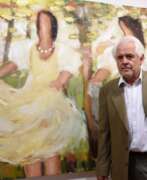

Kilian Lipp is a German painter known primarily for his distinctive paintings of ordinary rural people in their daily lives. The people on his canvases work, graze cattle, dance and rest.
Kilian Lipp works in various techniques - oil painting, pastels, chalk, watercolor and pencil. His work can be found in famous art collections, galleries and museums.


Sliman Mansour (also Suleiman or Suliman, Arabic: سليمان منصور), is a Palestinian painter, considered an important figure among contemporary Palestinian artists. Mansour is considered an artist of the intifada whose work gave visual expression to the cultural concept of sumud. Palestinian artist and scholar Samia Halaby has identified Mansour as part of the Liberation Art Movement and cites his important work as an artist and cultural practitioner before and after the Intifada.


Patrice Marchal is a contemporary French artist. Born in Abidjan, he then spent his childhood in Morocco. This look accustomed to wide open spaces, vast blue skies and distant horizons, the artist will transport them to France and transpose them into other landscapes, in the tradition of the painters of the Barbizon School. Self-taught painter, Patrice Marchal paints freely, opening up to everything and marveling at the beauty of the nature that surrounds us!
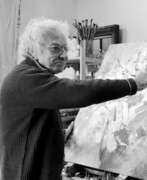

Alferio Maugeri is a French artist. In his youth, he was engaged in the restoration of churches in the footsteps of Michelangelo and the masters of the Renaissance. During this period, he developed the art of decoy, the ability to create artificial marble, gilding and improve religious frescoes. Alferio Mogeri is a member of the Paris Association of Arts, Sciences and Letters and his work is recognized throughout the world. The paintings were exhibited in Milan, New York, Geneva, Osaka, Tokyo and had magnetism and charm.


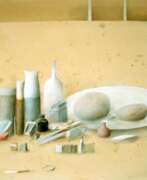

Karl-Ludwig Mordstein was a German artist, celebrated for his abstract art that transcended conventional boundaries. Born in 1937 in Allgäu, his journey in the art world began post his education in Augsburg and Munich, where he developed a unique style characterized by its abstract nature and emotional depth.
Karl-Ludwig Mordstein's work varied across mediums, including painting and graphic art. His artworks, like "Still leben/Still Life" from 1980, showcase his ability to blend color, form, and texture to evoke profound responses. His artistic contributions were recognized in various auctions, with works like "Der Monarch" and "Elli Pyrelli" illustrating his diverse range and depth as an artist.
The artist's life was as rich and varied as his art. After a brief administrative apprenticeship, Karl-Ludwig Mordstein explored different careers before dedicating himself to art. His works, reflecting a deep engagement with abstract expression, continue to attract collectors and art enthusiasts, highlighting his lasting impact on the art world.
For art collectors and experts, Mordstein's works offer a glimpse into the evolution of German abstract art. His legacy, encapsulated in his distinctive artworks, continues to inspire and provoke thought, demonstrating the enduring power of artistic expression.
For enthusiasts of Karl-Ludwig Mordstein's art, signing up for updates on new product sales and auction events is a splendid way to stay connected with his enduring artistic legacy. This subscription ensures you're informed about the latest opportunities to engage with Mordstein's impactful creations.


Hermann Naumann, a distinguished German artist, has made significant contributions to the fields of painting, graphics, illustration, and sculpture. Starting his artistic journey with a stonemasonry apprenticeship, Hermann Naumann later honed his skills in sculpture under the guidance of Burkhart Ebe and Herbert Volwahsen at the HBK Dresden. Over time, he expanded his artistic repertoire to include painting and graphic arts, embracing techniques like lithography, etching, and punch cutting.
Hermann Naumann's works are celebrated for their depth and versatility, reflecting his mastery over various mediums. Notably, his illustrations for literary works, such as Heinrich Böll's "Erzählungen" and Franz Kafka's "Betrachtung," showcase his exceptional ability to complement and elevate textual narratives through visual art. His public sculptures, like the relief in Dresden and the "Fahnenschwinger" in Riesa, further attest to his prowess in creating engaging and meaningful art.
For art collectors and enthusiasts, Hermann Naumann's oeuvre offers a rich tapestry of visual narratives, each piece echoing the artist's profound engagement with his subjects and mediums. Those interested in exploring Hermann Naumann's artistic journey and his contributions to German art and culture are encouraged to stay updated on exhibitions, sales, and auctions featuring his work.


Dale William Nichols was an American landscape painter whose work included illustrations, paintings, lithographs, and woodcarvings. His favorite subject is rural landscapes, often snow-covered. Nichols' paintings are represented in many public and private collections across the country, including the Art Institute of Chicago. His most famous oil painting, End of the Hunt, hangs in the Metropolitan Museum of Art.


Clare Richardson is a British photographer. She is known for her minimalist approach to photography, which often involves capturing still lifes, landscapes, and portraits in a spare, understated style.
Richardson's work has been exhibited internationally, including at the Museum of Modern Art in New York, the Victoria and Albert Museum in London, and the Hasselblad Foundation in Sweden. She has also published several photography books.
Richardson's work has been praised for its ability to capture the beauty and mystery of everyday life. Her images often feature ordinary objects and landscapes, but through her careful composition and use of light and shadow, she imbues them with a sense of quiet intensity and emotional resonance. Richardson has stated that she is drawn to the idea of "making something out of nothing," and her spare, elegant photographs reflect this ethos.


Dagmar Riese is a German painter, graphic artist and sculptor. He studied sculpture, painting and restoration at the art school in Flensburg. He was also a private pupil of the Basel artist Barbara Linhart. Dagmar Riese currently lives and works in Hamburg, Germany.


Clifford Smith is an American landscape painter.
Smith studied at Southern Connecticut State College and the Pratt Institute, Brooklyn. He has had numerous solo exhibitions since the late 1970s and has also participated in group exhibitions across the country.
Clifford Smith's works appear at first glance to be photographs, so realistically are they painted. Whether depicting ocean expanses or urban and rural landscapes, the artist conveys the tension and sensuality of nature.


Ralph Idris Steadman is a British illustrator best known for his collaboration and friendship with the American writer Hunter S. Thompson. Steadman is renowned for his political and social caricatures, cartoons and picture books. As well as writing and illustrating his own books and Thompson's, Steadman has worked with writers including Ted Hughes, Adrian Mitchell and Brian Patten, and also illustrated editions of Alice in Wonderland, Treasure Island, Animal Farm, the English translation of Flann O'Brien's Gaelic-language classic The Poor Mouth, and most recently, Fahrenheit 451. Steadman has drawn album covers for numerous music artists, including the Who, Exodus, Frank Zappa and Ambrosia, and the lead banner for the gonzo journalism website GonzoToday.com.






Gesa Will is a contemporary German artist. 1965-1969 studied painting and graphics in Cologne and Munich. She undertook study trips to France, Spain, Morocco, Turkey, Iran, Afghanistan and Pakistan. Since 1970 she has been working as a freelance artist. Has his own graphic design studio in Munich. She paints plants, landscapes, still lifes, portraits.


John Kyffin Williams was a Welsh landscape painter who lived at Pwllfanogl, Llanfairpwll, on the Island of Anglesey. Williams is widely regarded as the defining artist of Wales during the 20th century.


Konrad Winter is an Austrian artist known for his so-called "camouflaged" paintings.
He depicts ordinary modern life in cities: children playing, streets and parks, or it's a mountain landscape, a rural idyll. But it's all blurred, about the way myopic people without glasses see the world. It is as if the artist reveals to the viewer a magical, looking-glass world.


Peter Zaumseil, born in 1955 in Greiz, Germany, is a German artist known for his work with woodcuts, painting, and various printmaking techniques. He has had a significant influence on the contemporary art scene in Germany, producing original artworks and artist books. His work often explores the natural world and landscapes, reflecting his deep connection with the Vogtland region.
Zaumseil's portfolio includes a variety of art forms, from colorful woodcuts to expressive paintings and sculptures. His talent for creating vibrant and detailed woodcuts is demonstrated in his original art book, "Wasser ist Leben – die Weiße Elster von der Quelle bis zur Mündung," which contains 50 woodcuts depicting the journey of the Weiße Elster river.
His works have gained recognition in the art market, with pieces sold at various auctions. His auctioned works range from expressive coffeehouse interiors to unique paper cuts, showcasing his versatility and skill in different mediums. Many of his pieces, including "Im Dreieck II," "Teuflisch guter Wein," and "Schwarze Figur 1," highlight his ability to create intricate designs with a striking use of color.
Collectors and art experts can explore Zaumseil's work at art galleries and exhibitions across Germany, as well as through online platforms specializing in contemporary art. If you're interested in staying updated on new releases and auction events related to Peter Zaumseil, consider signing up for updates to receive information on new product sales and art-related activities.
















